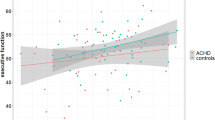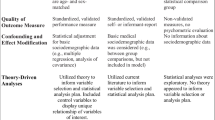Abstract
Congenital heart disease (CHD) is one of the most common congenital birth defects. As surgical and interventional techniques have improved, the mortality has been greatly reduced and the focus has shifted to quality of life and long-term outcomes. The impact of CHD on development and cognition is becoming increasingly recognized. However, more research is needed to understand how children with CHD perform across various cognitive and intellectual domains. This study explored the performance of children with CHD on the newest version of the Wechsler Intelligence Scale for Children compared to normative controls. Children with CHD performed more poorly than normal controls across all indices and most subtests with large effect sizes. Additionally, we explored the patterns of impairment across indices and subtests, as well as the relationships between heard disease variables and WISC-V performance. Block design, Digit Span, and Similarities were the most commonly impaired scores in children with CHD, while Symbol Search, Picture Span, Figure Weights, and Vocabulary were least likely to be impaired.
Similar content being viewed by others
Notes
Standardization data from the WISC-V. Copyright © 2014 NCS Pearson NCS Pearson, Inc. Data used with permission. All rights reserved. NCS Pearson, Inc.
References
Oster ME, Lee KA, Honein MA, Riehle-Colarusso T, Shin M, Correa A (2013) Temporal trends in survival among infants with critical congenital heart defects. Pediatrics 131(5):e1502–e1508
Best KE, Rankin J (2016) Long-term survival of individuals born with congenital heart disease: a systematic review and meta-analysis. J Am Heart Assoc 5(6):e002846
Cassidy AR, Ilardi D, Bowen SR et al (2018) Congenital heart disease: a primer for the pediatric neuropsychologist. Child Neuropsychol 24(7):859–902
Leonetti C, Back SA, Gallo V, Ishibashi N (2019) Cortical dysmaturation in congenital heart disease. Trends Neurosci 42(3):192–204
Peyvandi S, Latal B, Miller SP, McQuillen PS (2019) The neonatal brain in critical congenital heart disease: insights and future directions. Neuroimage 185:776–782
Ehrler M, Latal B, Kretschmar O, von Rhein M, Tuura RO (2020) Altered frontal white matter microstructure is associated with working memory impairments in adolescents with congenital heart disease: a diffusion tensor imaging study. NeuroImage Clin 25:102123
Ehrler M, Brugger P, Greutmann M et al (2022) White matter microstructure and executive functions in congenital heart disease from childhood to adulthood: a pooled case–control study. Child Neuropsychol https://doi.org/10.1080/09297049.2022.2144633
Sadhwani A, Wypij D, Rofeberg V et al (2022) Fetal brain volume predicts neurodevelopment in congenital heart disease. Circulation 145(15):1108–1119
Abda A, Bolduc ME, Tsimicalis A, Rennick J, Vatcher D, Brossard-Racine M (2019) Psychosocial outcomes of children and adolescents with severe congenital heart defect: a systematic review and meta-analysis. J Pediatr Psychol 44(4):463–477
Clancy T, Jordan B, de Weerth C, Muscara F (2020) Early emotional, behavioural and social development of infants and young children with congenital heart disease: a systematic review. J Clin Psychol Med Settings 27:686–703
Schaefer C, von Rhein M, Knirsch W et al (2013) Neurodevelopmental outcome, psychological adjustment, and quality of life in adolescents with congenital heart disease. Dev Med Child Neurol 55(12):1143–1149. https://doi.org/10.1111/dmcn.12242
Wilson WM, Smith-Parrish M, Marino BS, Kovacs AH (2015) Neurodevelopmental and psychosocial outcomes across the congenital heart disease lifespan. Prog Pediatr Cardiol 39(2):113–118
Diaz-Asper CM, Schretlen DJ, Pearlson GD (2004) How well does IQ predict neuropsychological test performance in normal adults? J Int Neuropsychol Soc 10(1):82–90. https://doi.org/10.1017/S1355617704101100
Foley J, Garcia J, Shaw L, Golden C (2009) IQ predicts neuropsychological performance in children. Int J Neurosci 119(10):1830–1847
Mayes SD, Calhoun SL, Bixler EO, Zimmerman DN (2009) IQ and neuropsychological predictors of academic achievement. Learn Individ Differ 19(2):238–241
Vazsonyi AT, Javakhishvili M, Blatny M (2022) Does self-control outdo IQ in predicting academic performance? J Youth Adolesc 51(3):499–508
Gindi S (2020) Educational placement of students with autism spectrum disorder and its relation to socioeconomic status, intelligence, and diagnosis. Int J Dev Disabil 66(3):235–244
Firkowska-Mankiewicz A (2011) Adult careers: does childhood IQ predict later life outcome? J Policy Pract Intellect Disabil 8(1):1–9
Hegelund ER, Flensborg-Madsen T, Dammeyer J, Mortensen EL (2018) Low IQ as a predictor of unsuccessful educational and occupational achievement: a register-based study of 1,098,742 men in Denmark 1968–2016. Intelligence 71:46–53
Beaver KM, Schwartz JA, Nedelec JL, Connolly EJ, Boutwell BB, Barnes JC (2013) Intelligence is associated with criminal justice processing: arrest through incarceration. Intelligence 41(5):277–288
Diamond B, Morris RG, Barnes JC (2012) Individual and group IQ predict inmate violence. Intelligence 40(2):115–122
Mathiassen B, Brøndbo PH, Waterloo K et al (2012) IQ as a moderator of outcome in severity of children’s mental health status after treatment in outpatient clinics. Child Adolesc Psychiatry Ment Health 6:1–7
Rajput S, Hassiotis A, Richards M, Hatch SL, Stewart R (2011) Associations between IQ and common mental disorders: the 2000 British National Survey of Psychiatric Morbidity. Eur psychiatry 26(6):390–395
Meisenberg G (2012) National IQ and economic outcomes. Pers Individ Dif 53(2):103–107
Bellinger DC, Rivkin MJ, DeMaso D et al (2015) Adolescents with tetralogy of Fallot: neuropsychological assessment and structural brain imaging. Cardiol Young 25(2):338–347
Matos SM, Sarmento S, Moreira S et al (2014) Impact of fetal development on neurocognitive performance of adolescents with cyanotic and acyanotic congenital heart disease. Congenit Heart Dis 9(5):373–381
Ryberg C, Sunnegårdh J, Thorson M, Broberg M (2016) Intellectual functioning in children with congenital heart defects treated with surgery or by catheter interventions. Front Pediatr 4:113
Daliento L, Mapelli D, Volpe B (2006) Measurement of cognitive outcome and quality of life in congenital heart disease. Heart 92(4):569–574
Karl TR, Hall S, Ford G et al (2004) Arterial switch with full-flow cardiopulmonary bypass and limited circulatory arrest: neurodevelopmental outcome. J Thorac Cardiovasc Surg 127(1):213–222
Kasmi L, Bonnet D, Montreuil M et al (2017) Neuropsychological and psychiatric outcomes in dextro-transposition of the great arteries across the lifespan: a state-of-the-art review. Front Pediatr 5:59. https://doi.org/10.3389/fped.2017.00059
Oberhuber RD, Huemer S, Mair R, Sames-Dolzer E, Kreuzer M, Tulzer G (2017) Cognitive development of school-age hypoplastic left heart syndrome survivors: a single center study. Pediatr Cardiol 38:1089–1096
Spillmann R, Polentarutti S, Ehrler M, Kretschmar O, Wehrle FM, Latal B (2021) Congenital heart disease in school-aged children: cognition, education, and participation in leisure activities. Pediatr Res https://doi.org/10.1038/s41390-021-01853-4
Bellinger DC, Bernstein JH, Kirkwood MW, Rappaport LA, Newburger JW (2003) Visual-spatial skills in children after open-heart surgery. J Dev Behav Pediatr 24(3):169–179
Bellinger DC, Watson CG, Rivkin MJ et al (2015) Neuropsychological status and structural brain imaging in adolescents with single ventricle who underwent the Fontan procedure. J Am Heart Assoc 4(12):e002302
Webb GD, Williams RG (2001) 32nd Bethesda Conference: Care of the adult with congenital heart disease. In: Journal of the American College of Cardiology, vol 37. American College of Cardiology Foundation Washington, DC, 1162–1165
Wechsler D (2014) WISC-V: Administration and Scoring Manual, 5th edn. PsychCorp: Pearson Bloomington, Bloomington https://worldcat.org/title/951443060
Assessments P. Important Q-interactive and WISC-V Information. https://email.pearsoned.com/clina/clina15779-23110-q-i-wisc-coding-transactional-cloud-20200203/index.html
MacAllister WS, Maiman M, Vasserman M, Fay-Mcclymont T, Brooks BL, Sherman EMS (2019) The WISC-V in children and adolescents with epilepsy. Child Neuropsychol 25(7):992–1002
Guilmette TJ, Sweet JJ, Hebben N et al (2020) American Academy of Clinical Neuropsychology consensus conference statement on uniform labeling of performance test scores. Clin Neuropsychol 34(3):437–453. https://doi.org/10.1080/13854046.2020.1722244
Guo T, Chau V, Peyvandi S et al (2019) White matter injury in term neonates with congenital heart diseases: topology & comparison with preterm newborns. Neuroimage 185:742–749. https://doi.org/10.1016/j.neuroimage.2018.06.004
Miller SP, McQuillen PS, Hamrick S et al (2007) Abnormal brain development in newborns with congenital heart disease. N Engl J Med 357(19):1928–1938
Muetzel RL, Mous SE, van der Ende J et al (2015) White matter integrity and cognitive performance in school-age children: a population-based neuroimaging study. Neuroimage 119:119–128. https://doi.org/10.1016/j.neuroimage.2015.06.014
Karsdorp PA, Everaerd W, Kindt M, Mulder BJM (2007) Psychological and cognitive functioning in children and adolescents with congenital heart disease: a meta-analysis. J Pediatr Psychol 32(5):527–541
Müller J, Christov F, Schreiber C, Hess J, Hager A (2009) Exercise capacity, quality of life, and daily activity in the long-term follow-up of patients with univentricular heart and total cavopulmonary connection. Eur Heart J 30(23):2915–2920
Mahle WT, Visconti KJ, Freier MC et al (2006) Relationship of surgical approach to neurodevelopmental outcomes in hypoplastic left heart syndrome. Pediatrics 117(1):e90–e97
Sanz JH, Berl MM, Armour AC, Wang J, Cheng YI, Donofrio MT (2017) Prevalence and pattern of executive dysfunction in school age children with congenital heart disease. Congenit Heart Dis 12(2):202–209
Acknowledgements
The authors thank all of those who helped collect, enter, and maintain these data in the REDCap database, including (alphabetically by last name) Christina Bigras, Dominique Bonneville, Shauna Bulman, Dr. Helen Carlson, Claire David, Hussain Daya, Jessica Doiron, Lauren Janzen, Andrea Jubinville, Christianne Laliberté-Durish, Shelby MacPhail, Lisa McColm, Lonna Mitchell, Alysha Rajaram, Carlie Redekopp, Kalina Slepicka, Shane Virani, and Nikola Zivanovic. Thanks to the families who agreed to participate in our research.
Author information
Authors and Affiliations
Contributions
All authors were responsible for aspects of data collection. MV wrote the main manuscript and prepared the tables. LM completed part of the statistical analyses and BB provided additional feedback for statistical procedures. All authors reviewed the manuscript.
Corresponding author
Ethics declarations
Conflict of interest
Brian Brooks receives royalties for the sales of the Pediatric Forensic Neuropsychology textbook (Oxford University Press), the Child and Adolescent Memory Profile (ChAMP, Sherman and Brooks, 2015, PAR Inc.), the Memory Validity Profile (MVP, Sherman and Brooks, 2015, PAR Inc.), and the Multidimensional Everyday Memory Ratings for Youth (MEMRY, Sherman and Brooks, 2017, PAR Inc.). Brian Brooks, Taryn Fay-McClymont, and Elisabeth Sherman have private practices where they evaluate youth. Brian Brooks receives honoraria for talks and grant funding for pediatric research. Marsha Vasserman and William MacAllister also receive honoraria for talks and some grant funds for research. Brian Brooks is a paid consultant for the NHL Concussion Program. The other authors do not have conflicts of interest to declare.
Additional information
Publisher's Note
Springer Nature remains neutral with regard to jurisdictional claims in published maps and institutional affiliations.
Rights and permissions
Springer Nature or its licensor (e.g. a society or other partner) holds exclusive rights to this article under a publishing agreement with the author(s) or other rightsholder(s); author self-archiving of the accepted manuscript version of this article is solely governed by the terms of such publishing agreement and applicable law.
About this article
Cite this article
Vasserman, M., Myers, K., Brooks, B.L. et al. Patterns of WISC-V Performance in Children with Congenital Heart Disease. Pediatr Cardiol 45, 483–490 (2024). https://doi.org/10.1007/s00246-023-03367-8
Received:
Accepted:
Published:
Issue Date:
DOI: https://doi.org/10.1007/s00246-023-03367-8




